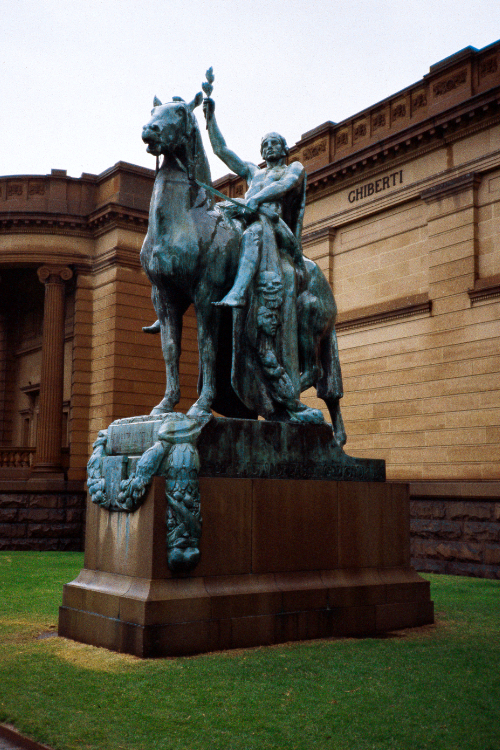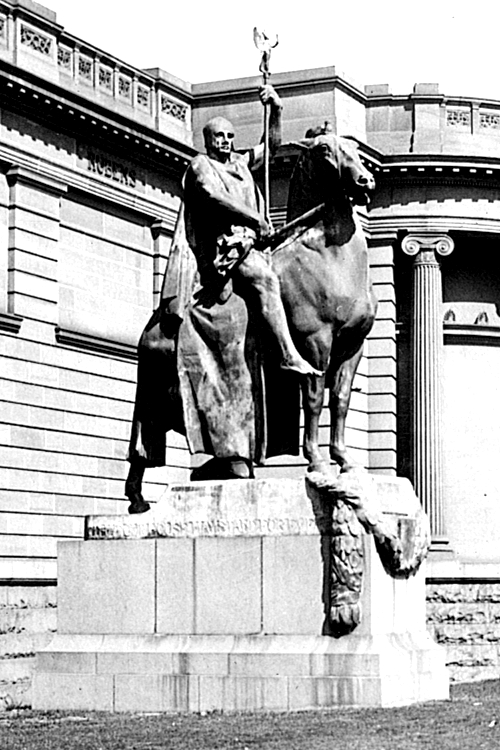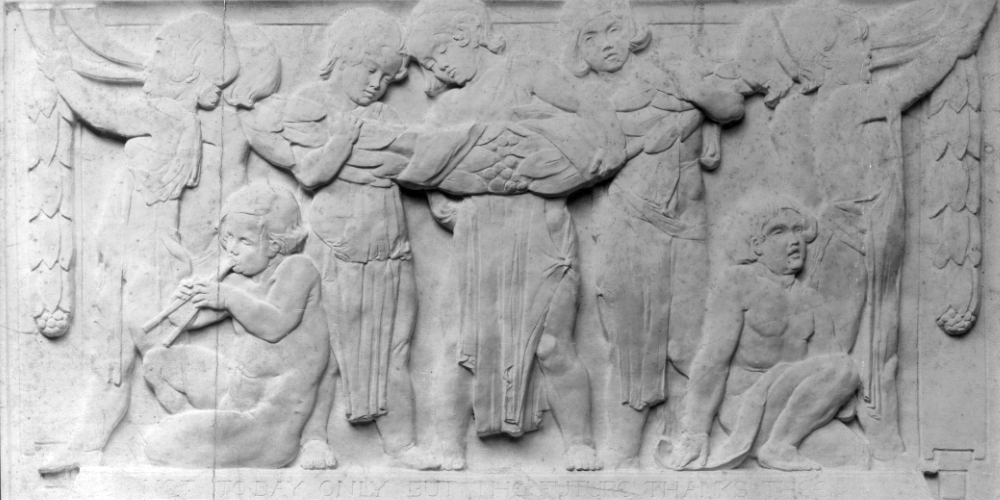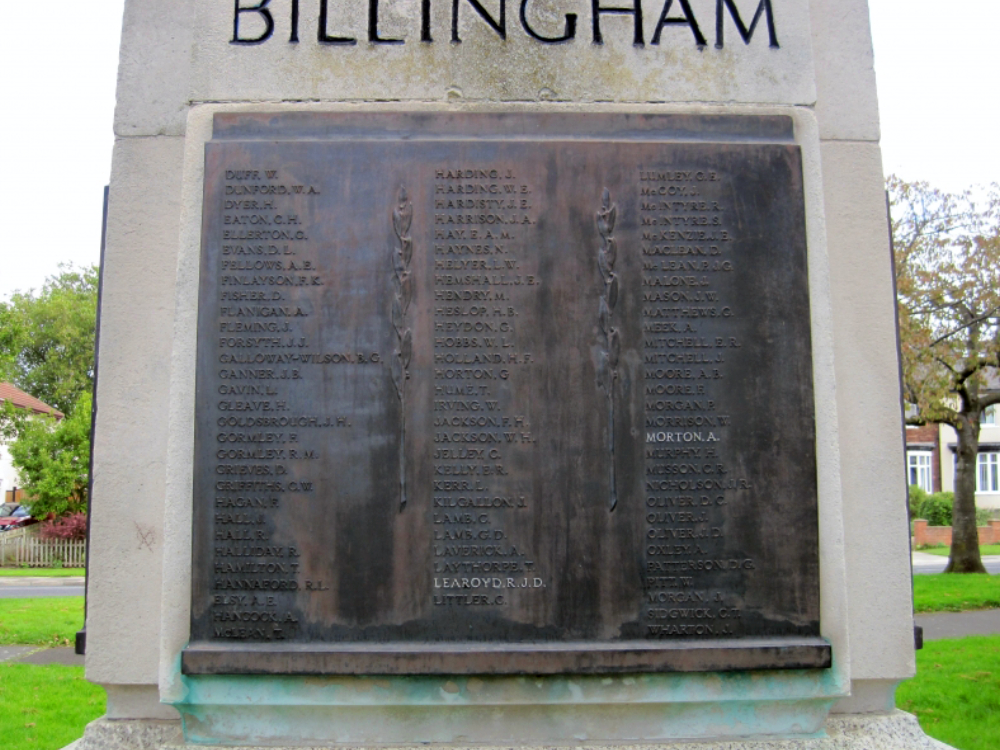War Memorials
Commemorative Sculptures
Following the aftermath of the First World War, there was a great need to commemorise those who had fallen in battle and whose bodies could not be brought home. The listing of names was also the driving force behind the War Memorial Movement in the 1920's and exhibitions were held at the Royal Academy at the Victoria and Albert Museum as well as other regional centres in order to guide local committees in their choice of sculptors, manufacturers, materials, styles and subject matter. In the Victoria and Albert Exhibition of 1919 not only was work by living sculptors shown but also models for memorials, objects, designs and photographs were exhibited. Gilbert Bayes was one of 200 sculptors, artists and designers in many fields who exhibited. The first of the five exhibits shown by Bayes was a photograph of the St Mary's Church, Primrose Hill Rood Screen that had been installed in 1914. Also included in this exhibition was a plaster copy of a relief, created for Aldeburgh, Suffolk and subsequently shown at the Royal Academy. Another piece of work in this exhibition was Bayes's Destiny, which was used as the focal point of the War Memorial in Ramsgate, Kent as well as a plaster of an equestrian statue that was also shown at the Royal Academy exhibition.






